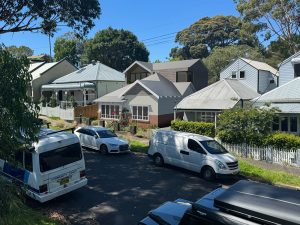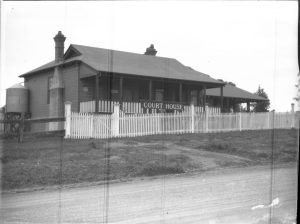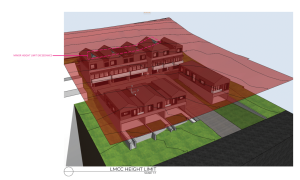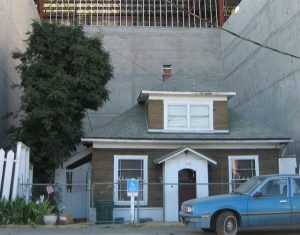Heritage conservation areas are located within all NSW Council areas and are usually in place to preserve the heritage value of the street. If you own a property within a heritage conservation area there are some things you should know before undertaking any renovations on your property (even if they are minor) as you might need approval from Council for any works.
Understanding what can be done
In NSW the Planning legislation allows for development to be undertaken without consent (meaning you don’t need development approval). Exempt development is for minor works to your property and have strict requirements that need to be complied with when constructing. In heritage conservation areas, not all the development allowed as exempt development can be undertaken and some types of exempt development are restricted within heritage conservation areas.
For example: Carports are allowed within heritage conservation areas without approval (maximum size of 25sqm for most lots). However, if your property is located in a HCA the carport must be constructed in the rear yard.
One type of development that is NOT exempt development within a HCA is minor building alterations (external). This type of exempt development allows for the painting, rendering, cladding or decorative works to the exterior of a building. Within a HCA, any external work to the building requires a development application or you will need to seek an exemption (discussed further).
If you are unsure whether your development requires approval it is best to check with Council or email us at admin@theplanningcollective.com.au to find out more.
Exemptions to Development Consent
Under the Local Environmental Plan (the Council legislation for Planning) there is a provision to allow for people to seek an exemption to approval under clause 5.10 (3) which states:
(a) the applicant has notified the consent authority of the proposed development and the consent authority has advised the applicant in writing before any work is carried out that it is satisfied that the proposed development—
(i) is of a minor nature or is for the maintenance of the heritage item, Aboriginal object, Aboriginal place of heritage significance or archaeological site or a building, work, relic, tree or place within the heritage conservation area, and
(ii) would not adversely affect the heritage significance of the heritage item, Aboriginal object, Aboriginal place, archaeological site or heritage conservation area,
The clause allows you to write to Council and ask for an exemption to development requirements where the work is deemed as minor and will not impact the heritage values of the area. This is an effective way of undertaking minor works to a property within a HCA and can be a good first avenue for you to try when considering alterations.
The following are types of development that could be done through an exemption (please note this is not a full list but just possible development types):
- Replacing existing balustrades
- Painting the dwelling
- Replacement of exterior stairs
- Replacement of windows or doors
- Recladding of weatherboard
- Rendering existing brickwork
These types of development will need to be considered by Council and generally require a report from a heritage consultant to specify that the works will have no impact to the heritage conservation area.
If you are wanting to seek an exemption, we can provide a report to Council seeking such an exemption if we feel the development is minor in nature. Please email us at admin@theplanningcollective.com.au to discuss.
Development applications with Heritage Conservation Areas
If the renovations are not considered exempt, then you will need to obtain approval through a development application with Council. Development within heritage conservation areas cannot be achieved through a complying development certificate (CDC). Any development application within the HCA will require a heritage impact statement which provides an assessment of the impact the development will have on the heritage values of the HCA. When undertaking a heritage impact statement, there may be some suggestions that the heritage consultant may suggest to help preserve the heritage values such as changing the roof type, colours, materials or design changes. Some common examples of this is development for first floor additions to existing single storey terrace buildings, where we have recommended the first floor be set back behind the existing ridge of the roof of the dwelling in a pavilion style addition at the rear to ensure the new works cannot be viewed from the street. We can work with you and your architect to get the best design approach that will help satisfy Council’s requirements.
Heritage compliance can be a difficult part of any development involving a property within a heritage conservation area. There are many restrictions that need to be navigated to ensure the best result is achieved for the client and ensuring the heritage values are retained.
Our heritage planner has over 15 years experience in the heritage space with experience as a Council Heritage Planner for one of Sydney’s largest Councils. We provide expert advice and support for your heritage development and can provide heritage impact statements as well as town planning services all in the one place, saving you time and money dealing with multiple consultants.
What is a heritage impact statement?
A heritage impact statement is a report that accompanies a development application where a property is located within a heritage conservation area (listed in the Local Environmental Plan). The report provides details to the history of the item including the historical significance and details any previous developments that have occurred to the item. The report provides an assessment of the impacts the development will have on the heritage values of the item or conservation area and can provide mitigation measures to ensure the proposed development does not detract from the heritage significance.
A Heritage Impact Statement (HIS) contains five sections as follows;
- A search of the prevailing heritage listings of the subject building whether it is a heritage listed building or a building in a conservation area. This search includes whether there aree any additional heritage items located in close proximity to the subject site.
- A brief history of the building and site; when it was constructed; who lived or worked there or had an association with it; what took place in the building and how the building has changed or been modified over time since the date of its original construction and whether any approvals have been provided. Often, additional resources are retrieved including early subdivision maps, DA application plans and information sourced from Council or other consent authorities.
- A significance assessment of the building or place based on the information acquired from Items 1 and 2 above. In other words, what is the relative proportion of the historic, associational, aesthetic, technical and social significance contained in the subject building? Further, is such significance exceptional, high, moderate, little or intrusive? And is such significance rare or representative? This step can often involve photographs of the existing building or surrounding area to provide context.
- A description of the proposed development as submitted to the consent authority (Council).
- An assessment of heritage impacts against the relevant guidelines and how the development responds to the heritage values and significance. The assessment would consider impacts upon the buildings setting, curtilage, predominant building type of the building and surrounding buildings, height of the development, bulk, scale, morphology, materiality, colours and setbacks. It will also provide an assessment of the visual impact of the proposed works in relation to the existing heritage fabric of the item.
- Recommendations and conclusion. This can often include mitigation measures such as reduction in height of new development, considerations to retention of certain aspects and changes to colours and materials.
How much do heritage impact statements cost?
The cost of a heritage impact statement are based on the works that are proposed. We aim to be competitive with our pricing for our heritage impact statement and can provide a flat fee quote once we have reviewed the information of the development.
Our standard heritage impact statement start at the following:
Exempt development – Heritage Impact statement for minor works – Starting at $1200
Simple Heritage Impact statement for Heritage Conservation area – Starting at $1800
Further prices and breakdowns can be viewed on our Pricing Page
Please note that the prices above are not fixed prices and will vary depending on the proposed development, Council area and the heritage details.
Further pricing discounts can apply for heritage impact statements where Town Planning Collective also prepares the statement of environmental effects.
How long do heritage reports take?
The general time frame for a heritage impact statement is 2-3 weeks depending on the complexity of the development. For larger developments, or developments that require a site visit to assess the heritage item then these timeframes will be greater. We attempt to finalise the report as quickly as possible to ensure that your development application is able to be submitted as soon as possible without the lengthy delay.
If you would like a quote for your heritage impact statement report please send us an email at admin@theplanningcollective.com.au or fill out our contact form below and include any relevant plans or documents.






















